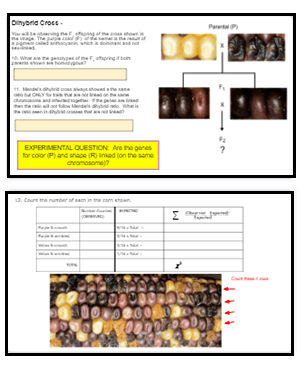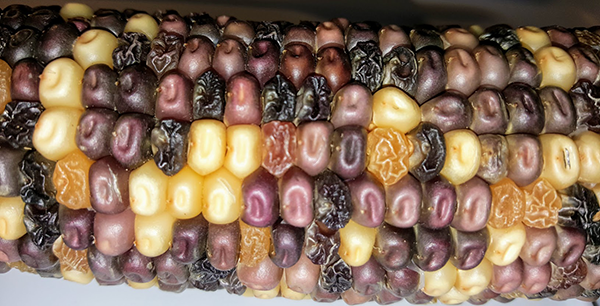
This is the remote version of a classroom activity I do with corn ears. Students would count the kernels (smooth, wrinkled, purple, yellow) and determine if the ears of corn are the result of a dihybrid cross, RrPp x RrPp.
This gives students the opportunity to apply statically analysis to data sets and determine if they accept or reject the null hypothesis. This set of slides can explain or introduce the concept of chi square analysis before students do this corn genetics assignment.
The slides start with a monohybrid cross (Rr x Rr) which is a little easier to analyze. I usually use a table to help students work chi square problems so that they can calculate Observed – Expected for each trait they are looking at and then sum the column.
There are chi square calculators online, but I’ve found that students have just as much trouble with those because they don’t know how to input values. This way, a slow walk though can help them understand where the numbers are coming from.

Though the remote activity isn’t as “organic” pardon the pun, I do have some students who are in class that can use the real corn. One advantage to using a photo is that students should have similar data, which makes it easier to grade.
I also have a classroom set of genetic corn ears that were ordered from Carolina (also available through Amazon) which can be used with my in-person students. I usually combine this part of the genetics unit with an overlap into plant biology, students also perform experiments with Wisconsin Fast plants, though I think this year, I’ll just have to show them as a demo.
If you want students to simply practice analyzing data and applying a “goodness of fit” test, I have this worksheet which gives them a few practice data sets.

